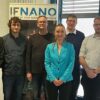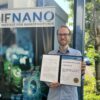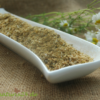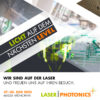The cooperative innovation project PhotoPlasma with the Institute for Nanophotonics in Göttingen has won a competitive tender and receives funding from the state of Lower Saxony, co-financed by the European Union for the analysis of food quality.
Manufacturers and suppliers of herbs, teas and spices on a natural basis, i.e., so-called organic products, often struggle with contamination from microorganisms such as fungi. bacteria and mites. These unwanted organisms harm the quality of the products and pose a health hazard to the consumer and reduce shelf life. This is especially true when they multiply. Reducing these organisms can produce relief. The methods used so far are insufficient or unsuitable (e.g., steam, CO2 treatment, etc.) or difficult to obtain due to the current global resource problems. In addition, the use of chemicals contradicts today’s consumer expectations in terms of health impact, sustainability or CO2 balance and can lead to contamination of the product with unwanted residues. Due to the increasing social and political pressure (e.g., Green Deal), adjustments are also to be made in the storage of food raw materials. Necessary adjustments can or must include, for example, innovative methods of preservation. Inactivation by UV light or the use of plasmas, which has not yet been researched, is compatible with natural raw materials.
In the cooperative innovation project, the University of Applied Sciences and Arts (HAWK) is developing a device for inactivating harmful microorganisms on natural raw materials based on UV light and plasma. The natural raw materials are provided by the project partner Holger Senger Vertrieb von Naturrohstoffe e.K. (naturix24.de).
The Institute for Nanophotonics in Göttingen develops analytical at-line methods for volatile aromas based on gas chromatography-mass spectrometry and gas chromatography-ion spectrometry coupling. In order to be able to connect the sensors directly to the system control, electrical noses based on semiconductor detectors are also being developed. The possibility of using semiconductor sensors as a replacement for the mass spectrometer or ion mobility spectrometer in gas chromatography is also being researched in order to be able to provide a cost-effective analysis tool for at-line analysis.
At the same time, the structure and color of the natural raw materials are analyzed using imaging processing. Both methods are used to optimize the treatment processes in order to avoid changing the product quality.
All data generated in the project are digitized so that it can be collected in a database and made available so that it can be used as a basis for further process development. In addition to monitoring product quality, the data is also used to create a so-called digital twin of process engineering.
The funding supports cooperative innovation projects that provide impetus for a competitive, sustainable food industry. The aim is to promote innovations and improve the exchange of knowledge between science and agricultural practice. The innovation project starts on August 1st, 2023 and lasts 3 years.






